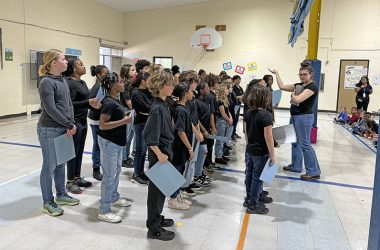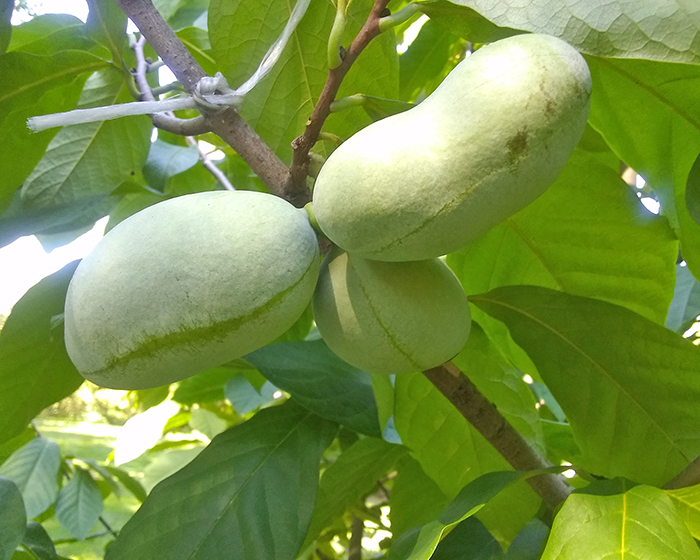It’s a tragedy whenever a tree is lost, and the aftermath of the Aug. 10 derecho windstorm was grounds for mourning across our H-F towns.

We were on a family visit and far from home on the day of the storm. Driving back to Flossmoor the next day, I started to understand what had just happened. My colleague Eric Crump posted an online story about the storm, and there was an email notice from Flossmoor announcing that the village hall was closed because power was out.
After we got home, Patty and I took a walk through our Heather Hill neighborhood and were shocked by what we saw. It was clear that the derecho, with winds between 80 and 100 mph, had pummeled the streets just north of us.
Along Berry Lane, we saw a tree that was totally ripped out of the ground. There was a hole where its base used to be. Along Balmoral Crescent, one tree was nearly completely stripped of its branches, and another appeared to be split in half at the base. On Oakmont Avenue, another tree’s trunk was standing but nearly all its branches had been torn to splinters.
Have any of us ever seen anything like this before? The Midwest is known for tornadoes that can devastate a small town. But this was a hurricane-force wind that plowed across 200 miles without, apparently, losing any of its impact along the way. Photos of damage in Iowa from the same storm show flattened grain silos and cornfields that were ripped to shreds.
About the best thing I can say is that nobody in our towns was hurt, and that property damage appeared to be minimal. It took days for power to be restored in our area but it eventually happened. Village crews did a good job and, as of this writing, most of the debris has been cleared. The tree on Berry was chopped up and carted away, with just the parkway hole as a reminder of the storm’s devastation.
A few weeks from now, we might all remember the Aug. 10 storm as just another odd event in an extremely odd year. Somehow, most of us have been able to kinda, sorta endure a year that includes a deadly virus that ends social contact as most of us know it, a clobbering of the U.S. economy, the realization that there’s no possible way that public schools will resume in-person classes anytime soon, a police killing in Minnesota that shattered any perceptions of racial justice and a presidential election that is shaping up as the scariest horror movie of all time. Why should it be unusual to have a windstorm that turns trees into toothpicks?
Trees are important to us. They provide shade and they help us to breathe. We are all better off because we have a canopy of maples and oaks and catalpas and all the other varieties of deciduous trees that are there for us every day.
It’s a tragedy to lose a tree but, thankfully, nearly all of the trees that were in the path of the derecho are still there. Many lost branches but are still standing tall against the sky. On the morning that I started writing this, I drove down Berry Lane and Balmoral Crescent and Oakmont Avenue for another look at the damage.
It was heartbreaking to see trees that will have to come down. Looking skyward, though, it was obvious that the vast majority of the trees made it through the storm and are still growing as big, strong, healthy plants. They survived the worst that the derecho dished out. It made me feel good to see that. They’ll be OK. Just like us.
At this point, let me shift to my backyard and the three pawpaw trees that are my own peculiar plant obsession. September is an important month for pawpaws and those of us who spend the rest of the year contemplating the arrival of exotic backyard fruit.
You may recall that I periodically write about my pawpaws, which have been in the back of the yard for seven years. When we first got our trees they were about three feet high. Now the tallest measures at about 15 feet although I stopped checking heights a couple of years ago.
The pawpaw is a native American plant and a fruit tree that is unique to the United States. Just about all other common fruit trees in this country were domesticated in other parts of the world before making their debut in the U.S.
Pawpaws, for the most part, have defied domestication and commercialization. The trees are classified as semi-tropical and mainly grow wild along rivers in places like southern Ohio and Maryland and the Carolinas. For many years, our part of Illinois has been considered the northern limit of where pawpaws grow wild, but that could be changing along with the climate.
We got our pawpaws as part of a major backyard tree purchase after our beloved ash succumbed to an insect blight and was taken down. I was intrigued by all the towns, lakes and rivers that are named after pawpaws and discovered that it would be possible to buy them and hopefully cultivate fruit that hardly anyone has ever seen, much less eaten.
Since then, it has been something of a roller coaster ride. Every spring, I wait for the first sign of the pawpaw’s blood-colored flowers, which appear before the leaves. After that, I worry about pollination by, I am told, flies. After that happens, little buds appear and – if the planets line up just right – some of those eventually become fruit.
Two years ago, I harvested exactly four pawpaws. I was not aware that they were ready to be harvested until they fell to the ground. Patty and I sliced them open and spooned out the fruit, which is somewhat banana-like but has a flavor that is sweet, custardy and different than anything I’ve eaten before. It was worth the wait. We also got to enjoy fruit from a few kind people in the H-F area who also have pawpaws.
Last year, severe storms in May destroyed the flowers so there was no fruit. This spring, the flowers were promising and I put out a jar filled with fly attractant – I am not making that up – to help with pollination. There are currently about a dozen pawpaws growing on the three trees. They are supposed to ripen during the next month. I’ve included a picture of the fruit as it looked earlier today. The largest fruit is about four inches long.
We’ll see what happens. If all goes well, I’d like to share some of this year’s pawpaw seeds with Dave Becker, the arborist for the village of Flossmoor. He knows a lot more about trees than I do and might be able to plant a grove of pawpaws next to the Public Works building.
Personally, I think everyone should grow pawpaws.



